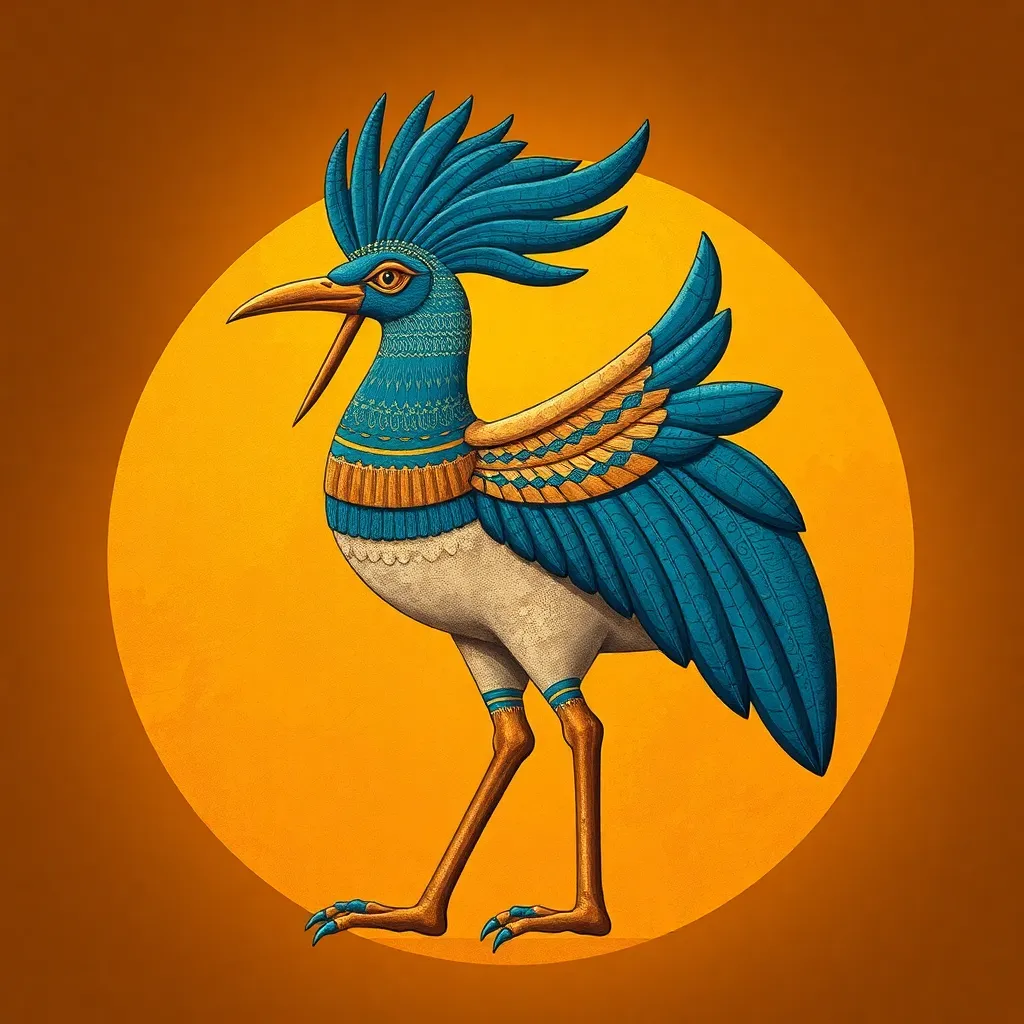The Bennu Bird: A Symbol of Rebirth in Egyptian Culture
I. Introduction
The Bennu Bird holds a prominent place in Egyptian mythology as a powerful symbol of rebirth and renewal. This mythical creature, often depicted as a heron or a bird resembling a phoenix, played a crucial role in ancient Egyptian beliefs surrounding life, death, and the cycles of nature. Symbols such as the Bennu were essential in ancient cultures, providing insight into their values, beliefs, and understanding of the world around them. This article aims to explore the historical context of the Bennu Bird, its symbolism of rebirth, and its influence on both ancient and modern societies.
II. Historical Context of the Bennu Bird
The origins of the Bennu Bird can be traced back to ancient Egyptian texts, where it is often associated with the sun god Ra. The Bennu was believed to rise from the ashes of its predecessor, signifying the eternal cycle of life and death. This connection to Ra highlights its importance in the Egyptian pantheon, as the sun god represented creation and renewal.
- The Bennu Bird was often linked to the annual flooding of the Nile, which brought life to the surrounding land.
- In ancient Egyptian religion, the Bennu played a role in rituals that celebrated the cycles of nature and the afterlife.
III. Physical Description and Representations
Artistic depictions of the Bennu Bird can be found in various artifacts and hieroglyphs from ancient Egypt. These representations often showcase the bird with vibrant plumage and a long, elegant neck.
- Coloration: The Bennu is typically depicted in shades of red and gold, symbolizing the sun and fire.
- Size and Features: It is often portrayed as a large bird with a long beak and tail feathers, resembling a heron or a stork.
When compared to other mythological birds, such as the Phoenix from Greek mythology, the Bennu shares similar qualities of resurrection and immortality, although each culture imbues its own unique traits and stories into these symbols.
IV. Symbolism of Rebirth and Renewal
The Bennu Bird’s association with the flooding of the Nile is a key element of its symbolism. The annual inundation brought fertility to the land, allowing agriculture to thrive and sustaining life in ancient Egypt.
In Egyptian philosophy, death was not seen as an end but rather a transition to a new existence. The Bennu embodies this idea, representing the cyclical nature of life and renewal. Rituals involving the Bennu were performed to promote growth and regeneration, both in the physical and spiritual realms.
V. The Bennu Bird in Literature and Texts
References to the Bennu Bird can be found in significant ancient Egyptian texts, including the Pyramid Texts and Coffin Texts. These writings often emphasize the bird’s role in the afterlife and its connection to the sun god Ra.
- Pyramid Texts: The Bennu is mentioned as a guide for the deceased, symbolizing their rebirth in the afterlife.
- Coffin Texts: These texts elaborate on the Bennu’s resurrection themes, linking it to the soul’s journey after death.
Additionally, the Bennu’s symbolic meanings permeate ancient Egyptian poetry, influencing later interpretations of rebirth in various forms of literature.
VI. Modern Interpretations and Cultural Impact
In contemporary society, the Bennu Bird continues to resonate within Egyptian identity and pride. As a symbol of resilience and rebirth, it embodies the spirit of the Egyptian people and their enduring connection to their history and culture.
The Bennu has also influenced modern art, literature, and popular culture, appearing in various forms of media that explore themes of regeneration and hope.
VII. Comparisons with Other Cultural Symbols of Rebirth
Throughout history, many cultures have developed myths and symbols that represent rebirth, such as the Phoenix in Greek mythology. While these symbols share common themes, each culture articulates its understanding of renewal in unique ways.
- Myths and Symbols: The Phoenix rises from its ashes, similar to the Bennu’s resurrection.
- Analysis: While both birds symbolize rebirth, the Bennu is more closely tied to the natural cycles of the Nile and agricultural life.
This comparison highlights the universal theme of regeneration present in human experience, reflecting our collective hopes for renewal and new beginnings.
VIII. Conclusion
In summary, the Bennu Bird holds immense significance in both ancient and modern contexts as a symbol of rebirth and renewal. Its legacy continues to inspire and resonate with people today, reminding us of the enduring power of hope and the cycles of life. Understanding cultural symbols like the Bennu is essential in a globalized world, as they connect us to our shared human experience and the diverse ways in which we interpret our existence.




